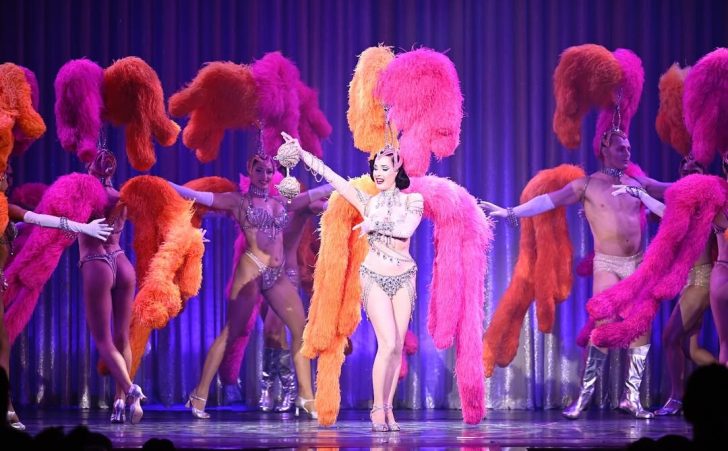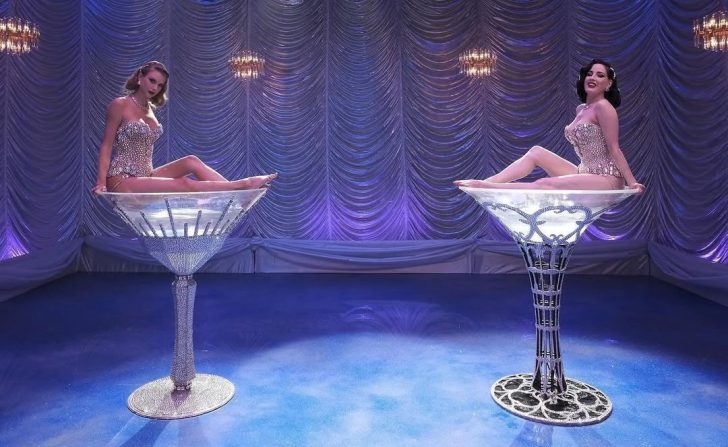The Las Vegas showgirl isn’t just part of Vegas history. She is Vegas history. From towering feathered headdresses to high-kick glamour, the showgirl still reigns as one of the city’s most powerful symbols. Even though classic revues like Jubilee! are long gone, her image lives on in neon, on screen, and on stages across the city and beyond.
The legacy is everywhere. Look up at the 50-foot-tall statues greeting you near the Gateway Arches.
The Las Vegas showgirl first strutted into the spotlight in the 1950s, built to impress. These women weren’t just performers. They were walking, dancing lures meant to pull gamblers through casino doors and keep them there all night. The more spectacular the show, the more attention the resort got.
The Strip exploded with competition. Casinos began battling over who had the tallest feathers, the sparkliest costumes, the most jaw-dropping choreography.

Early on, performers of color were often excluded or sidelined. Even after integration hit Las Vegas in 1960, major shows kept dancers separated by race into the early 2000s.
Parisian Flair, American Spectacle
Vegas didn’t create the showgirl blueprint from scratch. It borrowed heavily from France. Productions like “Lido de Paris” and “Folies Bergère” came straight from the Paris stage, complete with choreography and costumes. The French can-can became part of the Vegas DNA.
Those European roots gave the Las Vegas showgirl her flair with long legs, elegance, and theatrical boldness. But Vegas dialed it up, adding more sparkle, more skin, and a uniquely American sense of excess.
By the 2000s, big productions were fading. The 2008 financial crash hit hard, and expensive revues became too risky. “Folies Bergère” closed in 2009, ending the longest-running showgirl production in Vegas history.
In their place? Sleeker, smaller shows. Burlesque acts. Variety revues. Choreographers ditched the 40-pound headdresses for more freedom to dance. Still, the spirit of the showgirl didn’t vanish. It just changed outfits.

Other shows like “Fantasy” at the Luxor blend topless performance with pop choreography. Tourists still see sequins and feathers thanks to “Vegas! The Show,” where the showgirl looks pop in and out of the storyline. It is not a full throwback, but the vibe is clear. The showgirl never fully left.
The Showgirl in Pop Culture
The Las Vegas showgirl isn’t just a stage thing anymore. She is a pop culture icon. In 2024, Gia Coppola’s “The Last Showgirl” cast Pamela Anderson as a retired dancer facing the end of her era.
Music videos haven’t let go either. The Killers embraced showgirl imagery in “The Man,” while Taylor Swift tapped into the aesthetic for her upcoming album.
Behind the scenes, the Las Vegas Showgirl Museum fights to preserve the costumes, photos, and history of this unique art form. But it is under pressure. Without steady funding and permits, it risks fading away, just like the stages these women once lit up.




